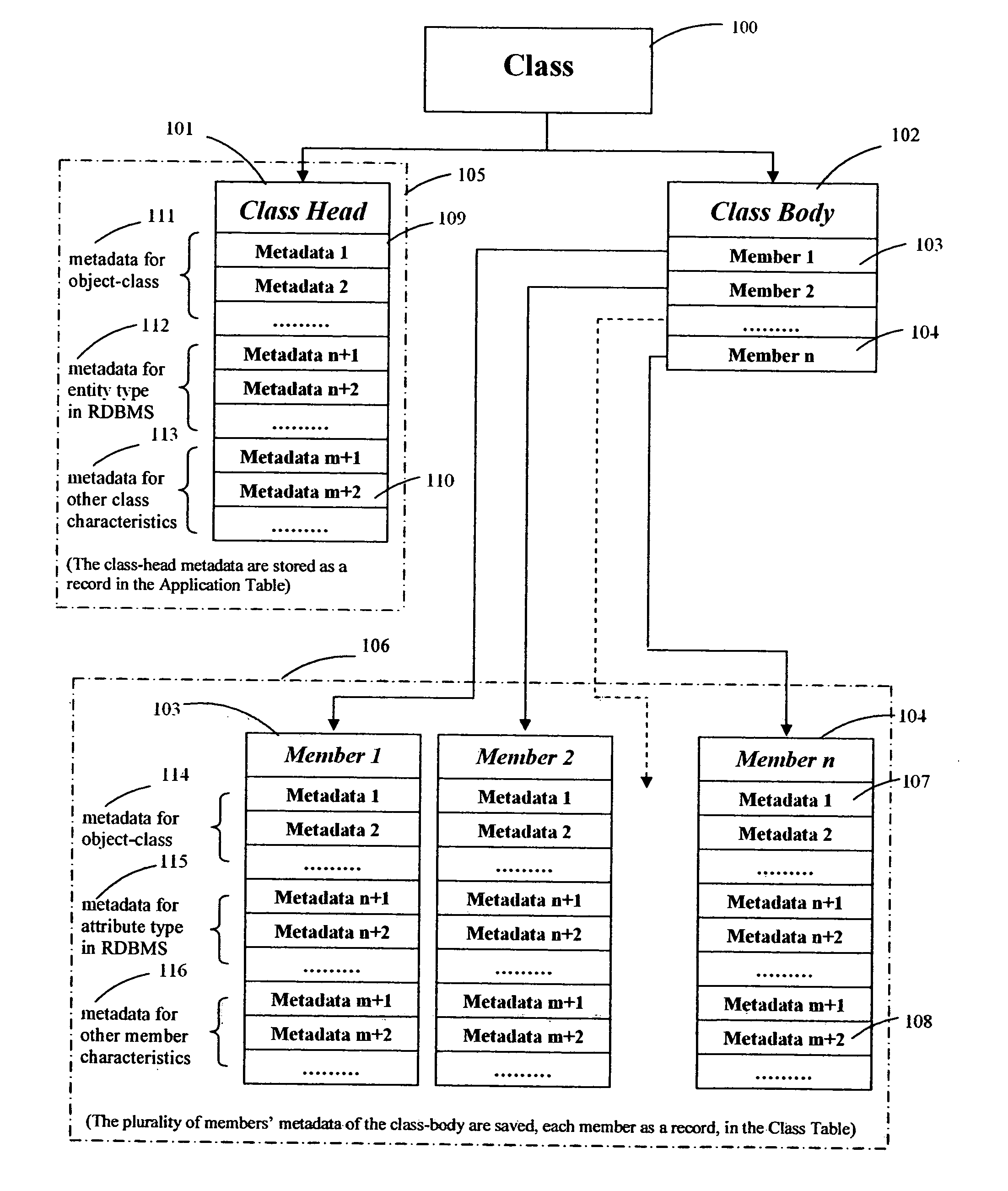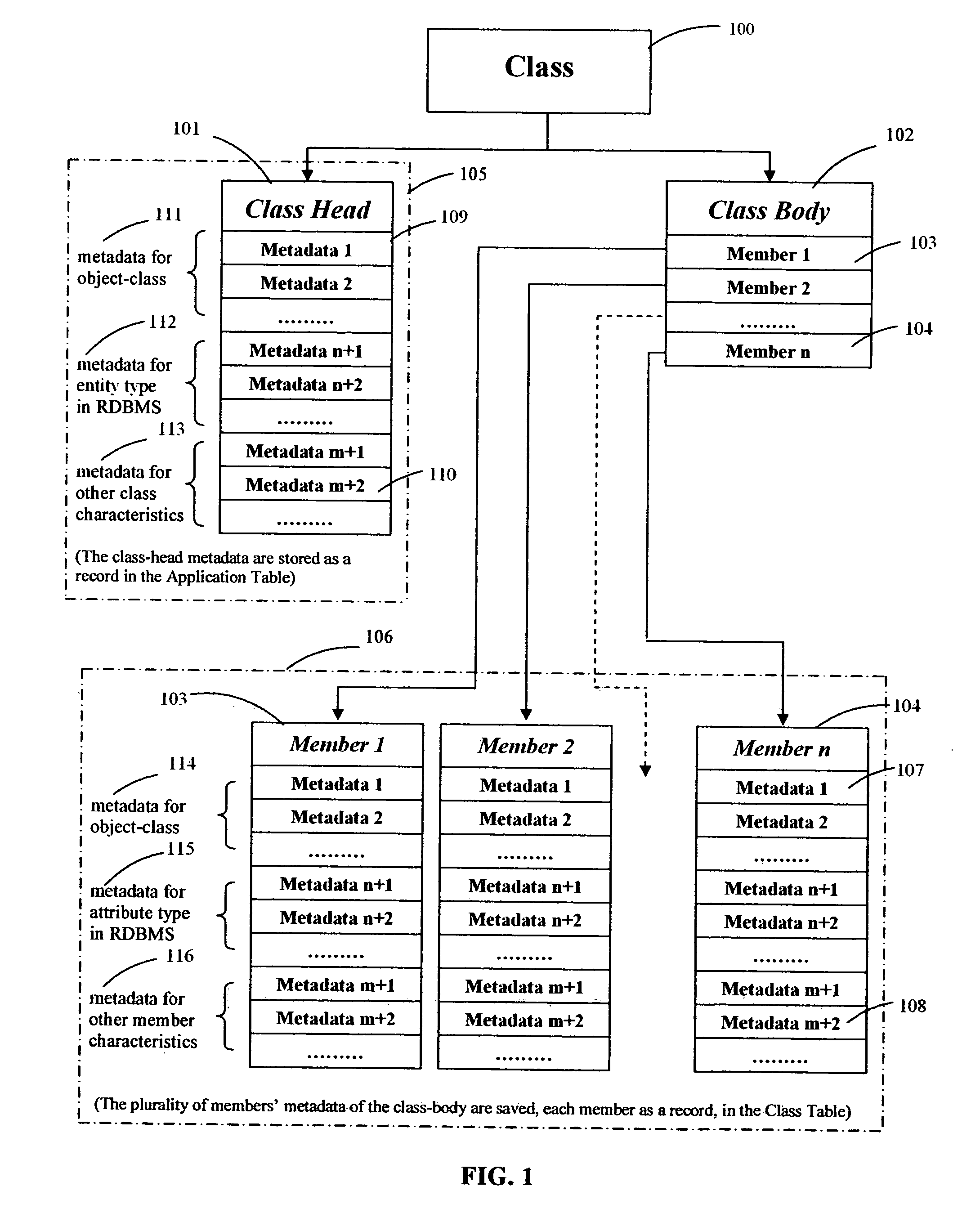Direct deployment of a software application from code written in tables
a table and code technology, applied in the field of object-oriented programming environment, can solve the problems of increasing complexity, requiring more from software, and imposing more on conventional software development, and achieve the effect of facilitating the development of software applications and software applications
- Summary
- Abstract
- Description
- Claims
- Application Information
AI Technical Summary
Benefits of technology
Problems solved by technology
Method used
Image
Examples
Embodiment Construction
Overview
A class is a description tool used in a program to define a set of attributes and a set of methods that characterize the members of an object. The definition of classes in OOPL is comparable to the definition of types in languages such as C or Pascal. For example, in C++ a class is defined as a structure that contains data elements as well as functions that manipulate these data elements.
The benefits of an object-oriented approach arise out of three basic principles: encapsulation, polymorphism and inheritance. Generally speaking, from a programming point of view, an object model is a unifying set of rules that describe object structure, object lifecycle, and inter-object communication. Object structure relates to the physical layout of objects in memory. Object lifecycle refers to how applications create and destroy objects. Inter-object communication refers to protocols by which objects communicate with one another. Most OOPLs do not specify true object models, but mer...
PUM
 Login to View More
Login to View More Abstract
Description
Claims
Application Information
 Login to View More
Login to View More - R&D
- Intellectual Property
- Life Sciences
- Materials
- Tech Scout
- Unparalleled Data Quality
- Higher Quality Content
- 60% Fewer Hallucinations
Browse by: Latest US Patents, China's latest patents, Technical Efficacy Thesaurus, Application Domain, Technology Topic, Popular Technical Reports.
© 2025 PatSnap. All rights reserved.Legal|Privacy policy|Modern Slavery Act Transparency Statement|Sitemap|About US| Contact US: help@patsnap.com



